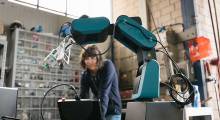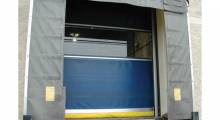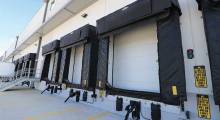How many times have you heard that it’s the little things that count? Retailing giant RadioShack turned little things into a big business. The batteries, ear phones, cables and accessories that make personal electronics work are RadioShack’s signature products. “From a brand perspective, this is the core business that we are known for,” says Jack Harwell, vice president of global sourcing and distribution operations. “The signature products are also extremely important to our profitability.”
It comes as no surprise then that a new pick module specially designed for those signature products has resulted in tremendous improvements at one of RadioShack’s two 600,000-square-foot distribution centers in Fort Worth, Texas.
Working with a systems integrator (Intelligrated, intelligrated.com), the pick module features motor-driven roller conveyor (MDR), light-directed picking, and an intelligent warehouse control system (WCS) that enables zone skipping for more efficient picking operations. It has delivered significant operational improvements, including:
order accuracy of 99.9%,
a 100% increase in picking rates, and
- increased SKU density by 75% to 1,800 SKUs.
As an unexpected benefit, the picking software has provided a new level of visibility into the productivity of the workforce. That has allowed RadioShack to reduce the head count in signature parts picking by 42%.
The module delivered those very big results in a 22,000-square-foot footprint that is two-thirds smaller than the 68,000-square-foot picking area it replaced. “Reducing the footprint of our picking area allowed us to consolidate our order fulfillment operations into one facility and free up a second DC to handle returns, repairs and the distribution or our fixtures,” says Harwell.
The old network
RadioShack opened its first audio equipment showroom in 1947. Since then, the company has grown to nearly 4,500 U.S. stores operated by RadioShack Corp., more than 1,100 independently owned franchise stores, and 1,500 wireless mobile centers located inside Target stores. In addition, RadioShack operates 225 stores in Mexico and has international franchises in 29 countries.
The stores are served by a distribution network that includes regional DCs in Hagerstown, Md.; Woodlawn, Calif.; and a joint facility in Fort Worth. “We had one 600,000-square-foot building in Fort Worth that was about 35 years old,” explains Dave Hewett, senior director of distribution. “And, in 1990, we built a second 600,000-square-foot facility in Fort Worth to take care of growth.”
The Maryland and California facilities serve stores in their region. The Fort Worth facilities, on the other hand, not only serve regional stores, they are also the national distribution hub for select product lines, handle Web fulfillment for RadioShack.com, supply products to franchisees in foreign countries, and provide specialized labeling services, such as labeling in Arabic for a dealer in Egypt.
Prior to this project, the network also included three additional facilities in Fort Worth for other processes such as returns, customer service, and repair and distribution of store fixtures. At that time, signature product SKUs were housed in a 20-year-old, light-directed pick-to-tote operation that took up 68,000 square feet in one of the other buildings. The system averaged 150 lines per hour, per operator. It had other limitations as well. “The conveyance system was old, it ran all the time, and it was noisy,” says Hewett. “Plus, all of the totes from the old signature parts-picking module went to a pack out area with 39 packing stations. It took up a lot of space.”
Toward a new design
The seeds for the new module were sown in 2004. RadioShack commissioned a network study to address its changing distribution needs. It identified two weaknesses.
First, the seven distribution centers, including two in Fort Worth, weren’t adequately serving RadioShack’s needs. Signature products distribution highlighted the inefficiencies in the existing network. “We were servicing about 5,700 stores from the old pick modules, and we were only able to make weekly deliveries to about 1,500 stores because at 150 lines per hour. We were at capacity,” says Hewett. That meant stores had to either carry extra inventory to make sure they had enough to get through until the next delivery, or they had to wait a long period of time if they ran out.
RadioShack also realized that clustering the chain’s most profitable products in one location known for extreme weather events created a significant risk. “Fort Worth is right on the edge of Tornado Alley,” says Harwell. “If a tornado wiped out that distribution center, we could be in a world of hurt.”
The net result of that study was that RadioShack needed to consolidate its Fort Worth distribution activities to get more efficient. In addition, it needed to create a process to regionalize the distribution of signature products and mitigate risk.
The new pick module addressed both of those objectives, but not without some work. “The old pick module was too big to move into one of the other DCs,” says Hewett. Instead, RadioShack decided to consolidate the signature products picking operation into an existing 22,000-square-foot pick module in one of the other buildings. To do that, “we had to reduce the physical footprint of the picking operations,” Hewett says.
Several technologies were evaluated, including put-to-light and tilt-tray sortation solutions, before RadioShack chose the design recommended by its systems integrator.
Two key features resulted in space and labor gains. One was the pick-to-light picking technologies. The other was zone-skipping technology that will only deliver a shipping carton to a zone where there are picks. “That reduced idle time of the pickers,” explains Randy Crowe, director of industrial engineering. Crowe adds that if a zone is full, the system software will automatically divert the carton to another zone with available work and then revisit the other zone later. “The carton is always moving,” he says.
The old conveyor system was replaced with motor-driven roller conveyor technology. Now, conveyor is only turning when it has product to move, which saves energy. In addition, the MDR conveyor is much quieter than the older system. “In the old facility, it was hard to carry on a conversation with active picking going on,” says Hewett.
Small footprint, big results
Since going live, RadioShack has realized significant benefits. Average lines picked per hour have doubled. Associates’ average picking efficiency also doubled, with peak picking efficiency rates up as high as 165%.
“As we get better at slotting and our people get more familiar with the system, we’ve been able to gradually draw down the labor in the picking module,” says Hewett. “That has let us transition people into other parts of the DC without increasing our head count. It’s a real continuous improvement process.”
RadioShack plans to extend the robust WCS to other areas of the building. This will provide RadioShack with labor management functionality that it does not have in the proprietary warehouse management system (WMS). “We will be able to track the performance of individual pickers throughout the building,” Crowe says. “We have more visibility into our labor than we ever have before.”
That information has been used to identify best practices that can be used to coach underperforming associates, or identify those associates who might be better suited to other tasks in the facility. “We have more visibility into our labor than we ever had before,” he says.
Most important of all, RadioShack is realizing its broader network goals. Where it once had five DCs, all of its Fort Worth activities including returns, repairs and fixtures, have been consolidated into two adjacent facilities.
More importantly, RadioShack is regionalizing the distribution of signature products, with new small parts pick modules that will go live this July in Maryland and California. “We’re going to have a higher level of service to our stores, which will allow us to ship every store on a weekly basis,” Harwell says. “And any one of the three DCs could ship on a national basis if necessary. That mitigates the risk of losing the Fort Worth DC to a tornado.”
Similarly, the WCS will allow RadioShack to better manage the labor in the other two facilities as well. “That has been an absolute bonus that we discovered after we went live,” says Harwell.







